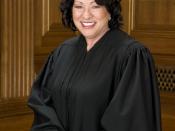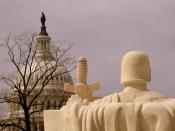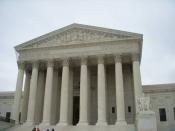The Exclusionary Rule � PAGE \* MERGEFORMAT �1�
Running head: CASE STUDY: THE EXCLUSIONARY RULE
The Exclusionary Rule
�
The Exclusionary Rule by the Supreme Court of the United States
According to Dempsey and Frost, (2011), although it is not part of the United States (U.S.) Constitution, the exclusionary rule is an interpretation of the Fourteenth Amendment by the U.S. Supreme Court. Simply stated, the purpose of the exclusionary rule is intended to limit or prevent police misconduct, illegal searches, and illegal seizures. It allows for evidence that is seized in violation of the U.S. Constitution to be suppressed and cannot be used in court against a defendant. The exclusionary rule is the understanding, based on U.S. Supreme Court precedent, that "incriminating information must be seized according to constitutional specifications of due process or it will not be allowed as evidence in a criminal trial," (Schmalleger, 2011, p. 221).
Since 1914, through a series of Supreme Court cases, the exclusionary rule evolved in U.S.
law. Initially, the Supreme Court was concerned with how the police use illegal means to seize evidence in search and seizure cases, in which was in violation of the Constitution and use that evidence to get a conviction in court. By 1961, the Supreme Court "applied the exclusionary rule to state courts and law enforcement agencies, as well as federal ones," because "states had not amended their procedures to conform to the Constitution," (p. 182).
Use of the Exclusionary Rule
Four landmark cases are compared and contrasted in this case study to show how the exclusionary rule has developed and is used in the United States, along with the effects that the ruling decision by the Supreme Court has had on evidence obtained from police search and seizure.
The first landmark case in developing the exclusionary...


